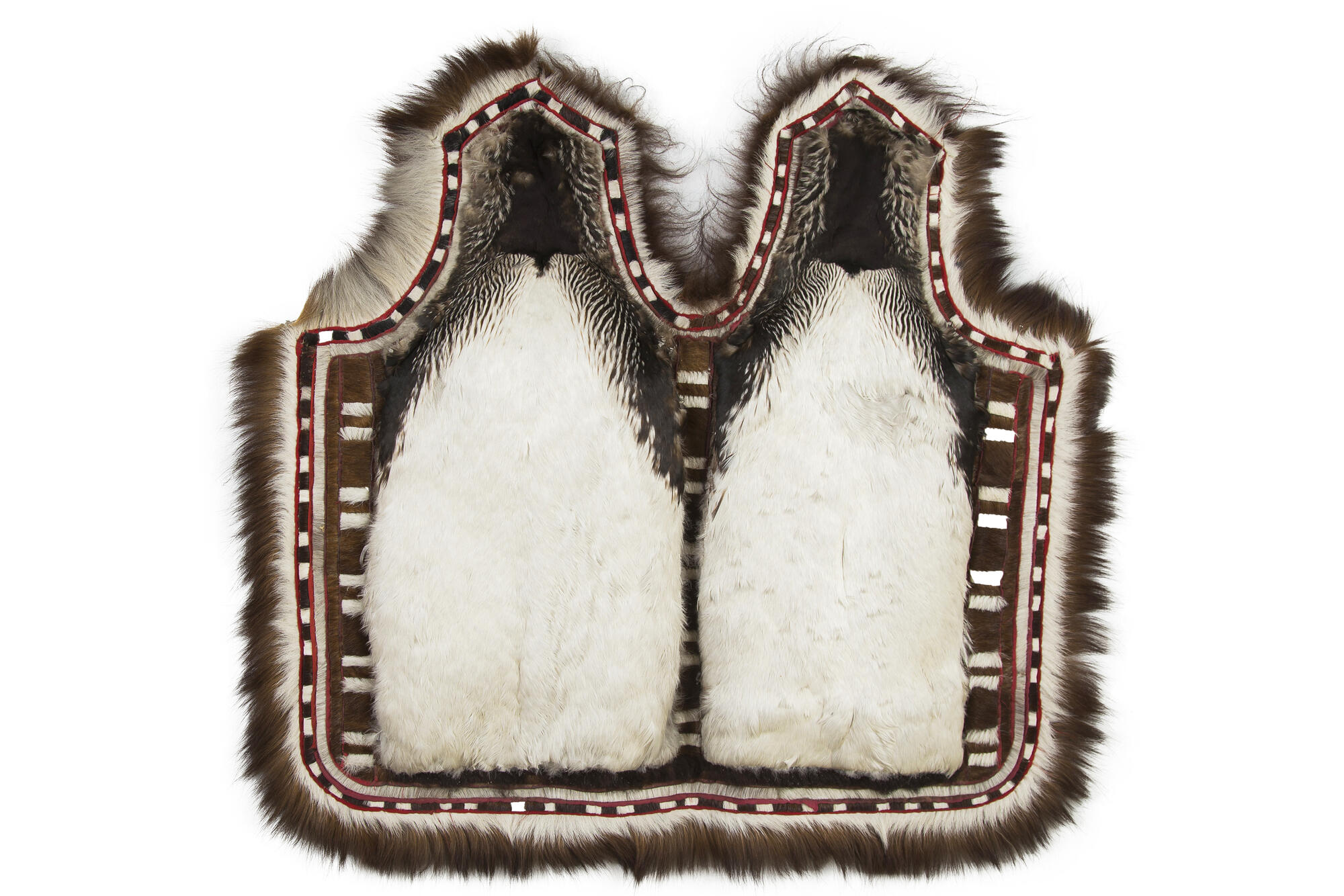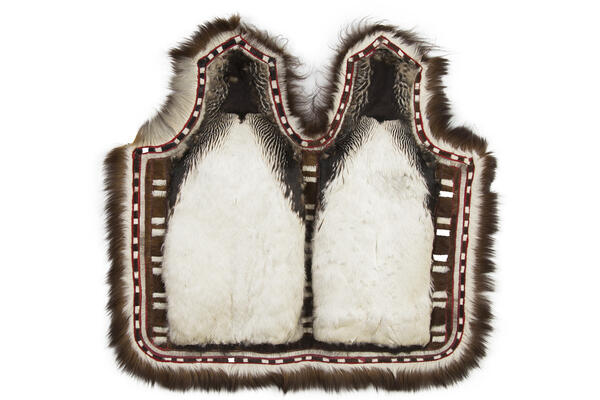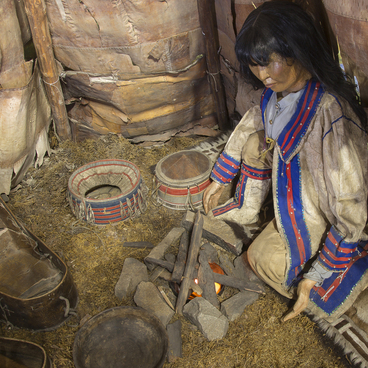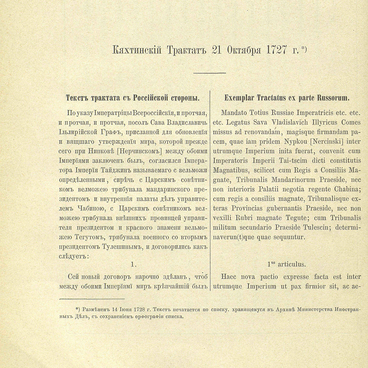The Evenks, or Evenki, were one of the indigenous peoples of Eastern Siberia. The origin of the Evenks is the result of complex processes, involving the mixing of different ancient aboriginal tribes that moved across the Transbaikal area in the 5th–7th centuries. Until the 1930s, they were called the Tungus, and later the term “Evenki” was popularized; was based on the group’s endonym.
The Transbaikal Regional Museum of Local Lore displays an Evenk dwelling, household items and national costumes. The collection also includes a woman’s fur breast-ornament decorated with thin strips of cloth and beaded embroidery. It was hung around the neck by braids, and covered the torso.
The main feature of the Evenk costume was the large number of elements. Women wore a caftan, a breast-ornament, natazniks (a kind of panties), which were put on their hips, nogovitsy (leggings) — stockings made of thick wool — and winter shoes, unty.
The tradition of decorating the breast area was formed a long time ago among the Evenks. Even in ancient times they wore a large metal jewelry piece on the neck. At first breast-ornaments were made of fur and thin skins of deer, goat and elk. Cloth began to be used in the 18th century.
Breast-ornaments, like other garments, have always been decorated. The one for rituals featured beaded embroidery, casual ones — a pattern of fur strips. The lower edge of the breast-ornament was embroidered with braided stitch using white hair and the gaps between the stitches were covered with paint. Short strips of black and white deer, dog or goat fur were added over the pattern.
In addition, women decorated their clothing with fringe, small metal figurines, and horsehair. There were regional differences as well. Researchers noted that the Evenks, who inhabited the territory of the Yablonovy Range (near the territory of modern Chita) and the Stanovoy Range (the territory of the modern Republic of Sakha-Yakutia) wore a more modest caftan.
The Transbaikal Regional Museum of Local Lore displays an Evenk dwelling, household items and national costumes. The collection also includes a woman’s fur breast-ornament decorated with thin strips of cloth and beaded embroidery. It was hung around the neck by braids, and covered the torso.
The main feature of the Evenk costume was the large number of elements. Women wore a caftan, a breast-ornament, natazniks (a kind of panties), which were put on their hips, nogovitsy (leggings) — stockings made of thick wool — and winter shoes, unty.
The tradition of decorating the breast area was formed a long time ago among the Evenks. Even in ancient times they wore a large metal jewelry piece on the neck. At first breast-ornaments were made of fur and thin skins of deer, goat and elk. Cloth began to be used in the 18th century.
Breast-ornaments, like other garments, have always been decorated. The one for rituals featured beaded embroidery, casual ones — a pattern of fur strips. The lower edge of the breast-ornament was embroidered with braided stitch using white hair and the gaps between the stitches were covered with paint. Short strips of black and white deer, dog or goat fur were added over the pattern.
In addition, women decorated their clothing with fringe, small metal figurines, and horsehair. There were regional differences as well. Researchers noted that the Evenks, who inhabited the territory of the Yablonovy Range (near the territory of modern Chita) and the Stanovoy Range (the territory of the modern Republic of Sakha-Yakutia) wore a more modest caftan.



